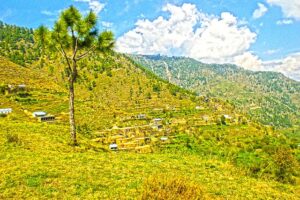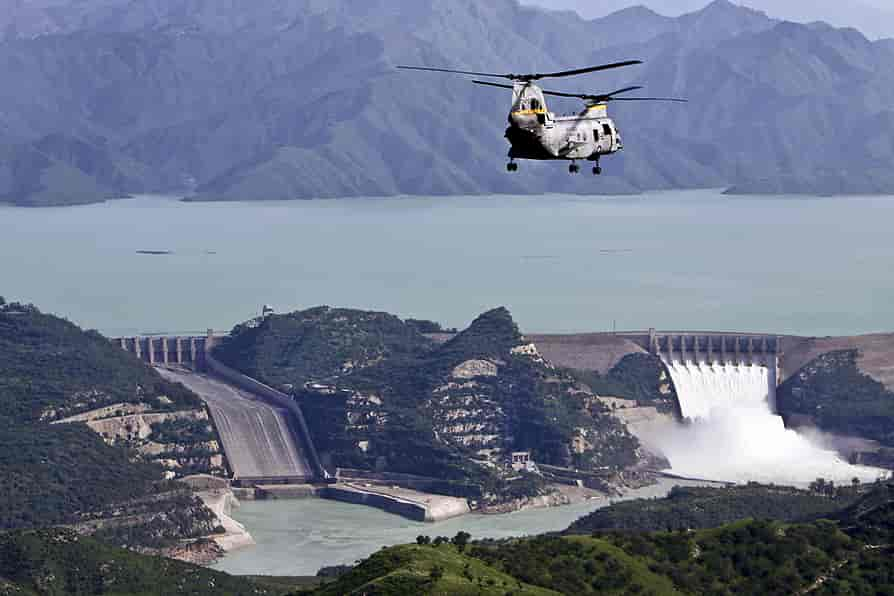Swabi
Swabi is a city in Khyber Pakhtunkhwa, situated between the rivers Indus and Kabul. It has historical as well as recreational spots.The district is known for its fertile lands, lush fields, and a network of canals that make it a vital agricultural region. Swabi’s idyllic scenery is further enhanced by the presence of the River Indus, which adds to the region’s natural charm.
Swabi is not only about picturesque vistas; it has its own historical tales to tell. The district is home to archaeological sites like Jamal Garhi, which boasts ancient stupas and monastic cells, providing a window into the region’s Buddhist past. Moreover, Gohar Fort, a historic structure, adds to the historical allure of Swabi.

For those who appreciate a touch of adventure, Swabi is an excellent starting point for exploring the beautiful valleys of Khyber Pakhtunkhwa, including Malakand, Dir, and Buner. The district serves as a gateway to these pristine destinations, making it a convenient base for travelers.
With its natural beauty, historical sites, and proximity to other scenic areas, Swabi beckons both nature enthusiasts and history buffs. It’s a place where you can witness the harmonious coexistence of nature and heritage, offering a glimpse into the diverse tapestry of Khyber Pakhtunkhwa.
Swabi District is divided into four Tehsils named
- Lahor
- Razzar
- Swabi
- Topi
Key information about Swabi
| Heading | Information |
|---|---|
| Location | Swabi is located in the Khyber Pakhtunkhwa (KP) province of Pakistan. It is situated in the heart of the province. |
| Geography | Swabi is characterized by lush fields, fertile lands, and a network of canals. It is also traversed by the River Indus, enhancing its natural beauty. |
| Historical Sites | Swabi is home to archaeological sites such as Jamal Garhi, which features ancient stupas and monastic cells, and Gohar Fort, a historic structure. |
| Nearby Destinations | Swabi serves as a convenient base for exploring nearby scenic areas, including Malakand, Dir, and Buner. It provides access to these pristine destinations. |
| Economy | The district’s economy is primarily agrarian, with agriculture playing a significant role. It is known for the cultivation of various crops and fruits. |
| Culture | Swabi has a rich cultural heritage, with traditions that reflect the broader Khyber Pakhtunkhwa culture. The district is known for its cultural events and festivities. |
| Natural Beauty | The natural beauty of Swabi is accentuated by its fertile landscapes, lush greenery, and the presence of the River Indus, making it an appealing destination for nature lovers. |
History
Swabi and its surrounding areas have witnessed the footprints of various ancient civilizations, including the Gandhara civilization. This region was part of the larger Gandhara region, known for its Buddhist heritage. Archaeological sites like Jamal Garhi, with its ancient stupas and monastic cells, provide glimpses into Swabi’s ancient past.
Buddhism had a significant presence in Swabi during ancient times. The relics and ruins of Buddhist monasteries and stupas are a testament to this influence. The region played a pivotal role in the spread of Buddhism in the subcontinent.
Swabi is also home to historical structures like Gohar Fort. This fort is not only a symbol of the region’s history but also an architectural marvel. It stands as a reminder of the region’s strategic significance in various eras.
Swabi’s culture is a reflection of the broader Khyber Pakhtunkhwa culture. The district has a rich tradition of cultural events and festivities, showcasing the local customs and way of life.
Over the centuries, Swabi has witnessed changes in rulers, empires, and cultural influences. It has been part of various historical transitions, contributing to its unique historical identity.
Famous Tourist & Historical Sites
Kund Park
The borderline of Punjab ends at Khairabad and KPK starts here. It is a small village between the river Indus and the river Kabul. KPK tourism department has established a tourist park there. Vehicles can be parked at the side of the Khairabad point alongside Attock fort.
The two rivers can be seen mixing on the right side near the bridge. Kabul river has brown color while the river Indus has clear blue water. Both the brown color and blue color water flow together at a long distance. It is a fascinating and splendid sight.
Parking is there at a distance of 4km from the Attock bridge. This parking is on Pindi Road 4km from Swabi Interchange and Jahangira if you are coming Islamabad motorway. There is a ferry service, small boats, and cable cars near the edge of the river.

Going to the other edge of the river through any of these services is a thrilling experience. This park has rich green lawns, play areas, huts, and restaurants. There are golf cars in this 2.1 km long park. There is a facility for camel and horse riders. You can enjoy fishing too.
Hund
This ancient historical village is 6km from village Chota Lahore of district Swabi on the highway directed to Tarbela Dam which is 22km northeast of Attock. Historians used to call this village “the gate to subcontinent”.
According to Chich historians, this village was settled by Hund the grandson of Hazrat Noh (A.S). The first chapter of the Rig Veda mentions the Odabandpur (Hund) in the 41st Sukta of the 64th Bhajan. It was the capital of Hindu Shahi and an important city of Gandara civilization in 1008.
Alexander the Great crossed the Indus River here at the time of the invasion of the subcontinent. When Genghis Khan reached here like a hurricane, he saw the width of the river and went back. This was also the decisive battle between Raja Jay Pal and Mehmood Ghaznavid, the defeat of which became the fate of Raja Jayapal of Punjab.
The signs of Hund fort still exist. The valuable artifacts of the region are exhibited in Hund Museum on the bank of the river Indus. This museum can be seen from the river Indus bridge on the Islamabad Peshawar motorway.

Chota Lahore
The ancient area of Swabi is Chota Lahore. It was a civilized city stretching over a large area. Its oldest name was Salatur.
When the astrologers came and settled here, they were the ones who worshiped Mars. They made this place the temple of Mars and named it Lahore. Xuanzang (Hsüan-tsang) and Kangham have written it the city of “Brahmans”.
Maharaja Ashok built a memorial of Panini. Panini who was a philologist and grammarian wrote the grammar of the Sanskrit language. It was the birthplace of this great scholar. He was the first who embraced Buddhism.
Alexander the Great crossed the river Indus at this point and joined Raja Ambahi as his guest. It was the capital of the Gandara civilization and Raja Jay Pal before the Islamic regime.
Tarbela Dam (The world’s largest earthen filling dam)
Tarbela dam project was started formally on 14th May 1968 when WAPDA and Tarbela Giant Venture signed a contract of 650 million American dollars. It was the biggest contract in the World in terms of finance.
A group of 13 Italian, French, German, and Swiss companies completed this project of the construction of the dam in three steps. The width of the river was blocked with a nine thousand feet high wall. The lower wall of the dam is 42 feet while the upper wall is only 5 feet wide.
A permission letter is required to visit the dam which can be obtained from PRO WAPDA Tarbela or WAPDA house Lahore.

Captain Karnal Sher Khan Shaheed Nishan-e-Haider
Karnal Sher Khan was born on 1st January 1970 and got a commission in the army on 14th October 1994. Captain Karnal Sher Khan appeared as a brave soldier in the war of Kargil. He did great damage to the enemy by setting examples of bravery and courage.
At a height of 17,000 feet, he protected five defensive posts at the front of Gul Tari. On 5th July 1999, the enemy attacked the posts of Karnal Sher Khan with the assistance of two battalions and a heavy mortar. The enemy succeeded in capturing one check post.
Karnal Sher Khan regained that defensive post despite great difficulties. However, during this attack, he was martyred after getting a shot by machine gun. Later on, he was awarded the highest military award “Nishan-e-Haider”. The grave of this brave man is on the Mardan road from Swabi
Jamal Garhi
Historical Stupas and Monastic Cells: Jamal Garhi is an archaeological site of great significance. It is known for its ancient Buddhist stupas and monastic cells, which offer a glimpse into the region’s Buddhist heritage.
Gohar Fort
Historical Fortress: Gohar Fort, located in the district, is a historic structure with a unique blend of architectural beauty and historical importance. It serves as a reminder of the region’s rich past.
Marghuzar
Natural Beauty: Marghuzar, a picturesque town in Swabi, is known for its lush green fields, scenic beauty, and tranquil atmosphere. It’s a perfect destination for those seeking a peaceful retreat.
Yar Hussain
Agricultural Heart: Yar Hussain is a town celebrated for its agricultural significance. The region’s vast fields and fertile lands contribute to the district’s agricultural prosperity.
Shewa Adda
Commercial Hub: Shewa Adda is a bustling market in Swabi known for its economic activity. It’s a place where locals gather for shopping, dining, and socializing.
Shewa
Historical Village: Shewa is an ancient village with historical relevance. It showcases a blend of traditional architecture and a glimpse into the region’s past.
Panjpir
Spiritual Retreat: Panjpir is known for its spiritual and cultural significance. The shrine of Panjpir is a revered site for devotees and travelers.
Frequently asked questions (FAQs)
Q: What is the significance of Jamal Garhi in Swabi?
A: Jamal Garhi is an important archaeological site known for its ancient Buddhist stupas and monastic cells. It provides insights into the region’s Buddhist heritage and history.
Q: What can visitors expect to see at Gohar Fort?
A: Gohar Fort is a historic fortress in Swabi that offers a blend of historical significance and architectural beauty, making it a notable attraction for history enthusiasts.
Q: Is Marghuzar a popular tourist destination in Swabi?
A: Yes, Marghuzar is a picturesque town celebrated for its lush green fields and tranquil atmosphere, making it a favored spot for those seeking natural beauty and serenity.
Q: What is the specialty of Chota Lahor in Swabi?
A: Chota Lahor is a charming riverside location where visitors can enjoy the beauty of the river and its surroundings, making it an excellent choice for picnics and relaxation.
Q: Why is Yar Hussain known as an important town in Swabi?
A: Yar Hussain is celebrated for its agricultural significance, with vast fields and fertile lands that contribute to the district’s agricultural prosperity.
Q: What can one explore in Shewa Adda?
A: Shewa Adda is a bustling market and commercial hub in Swabi, where locals gather for shopping, dining, and social interactions, offering a taste of the local lifestyle.
Q: Is Shewa known for its historical significance?
A: Yes, Shewa is an ancient village in Swabi that provides a glimpse into the region’s history and traditional architecture, making it an interesting destination for history buffs.
Q: What is the spiritual significance of Panjpir in Swabi?
A: Panjpir is known for its spiritual and cultural importance. The shrine of Panjpir is a revered site for devotees and travelers, attracting those seeking blessings and solace.
Wind Up Lines
Swabi is a historical city of Khyber Pakhtunkhwa. It is blessed with natural beauty and splendid landmarks. Moreover, it is a town of brave people like Sher Khan.
